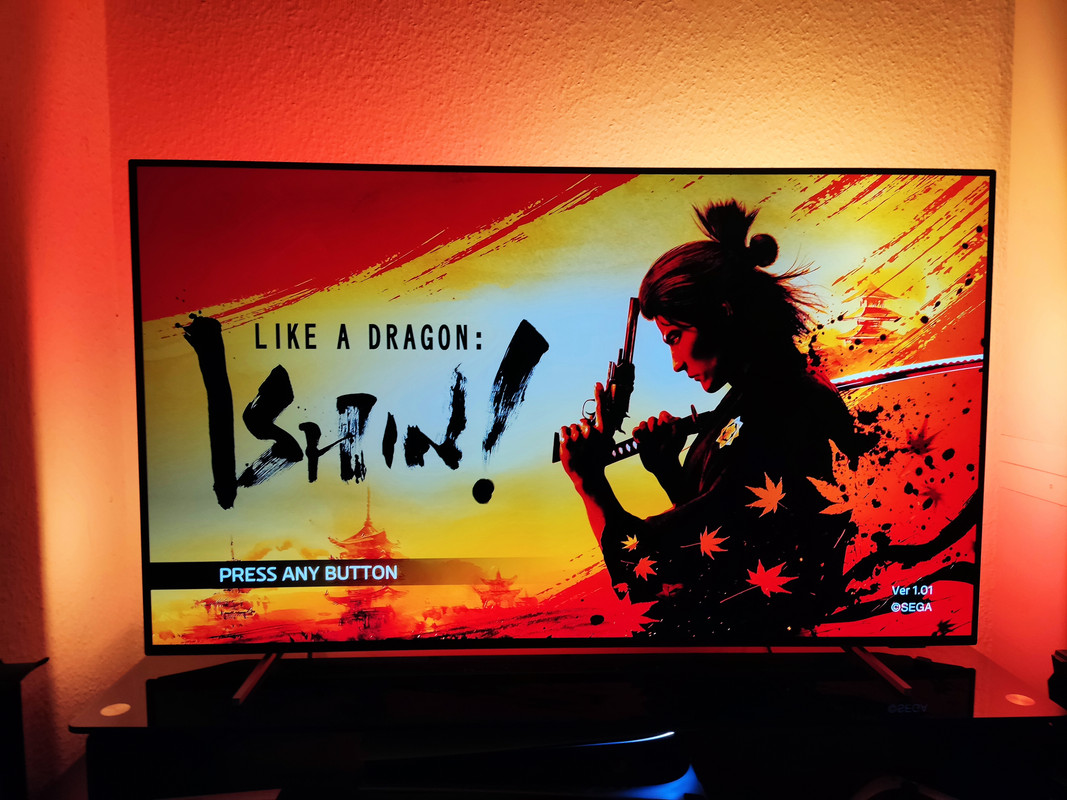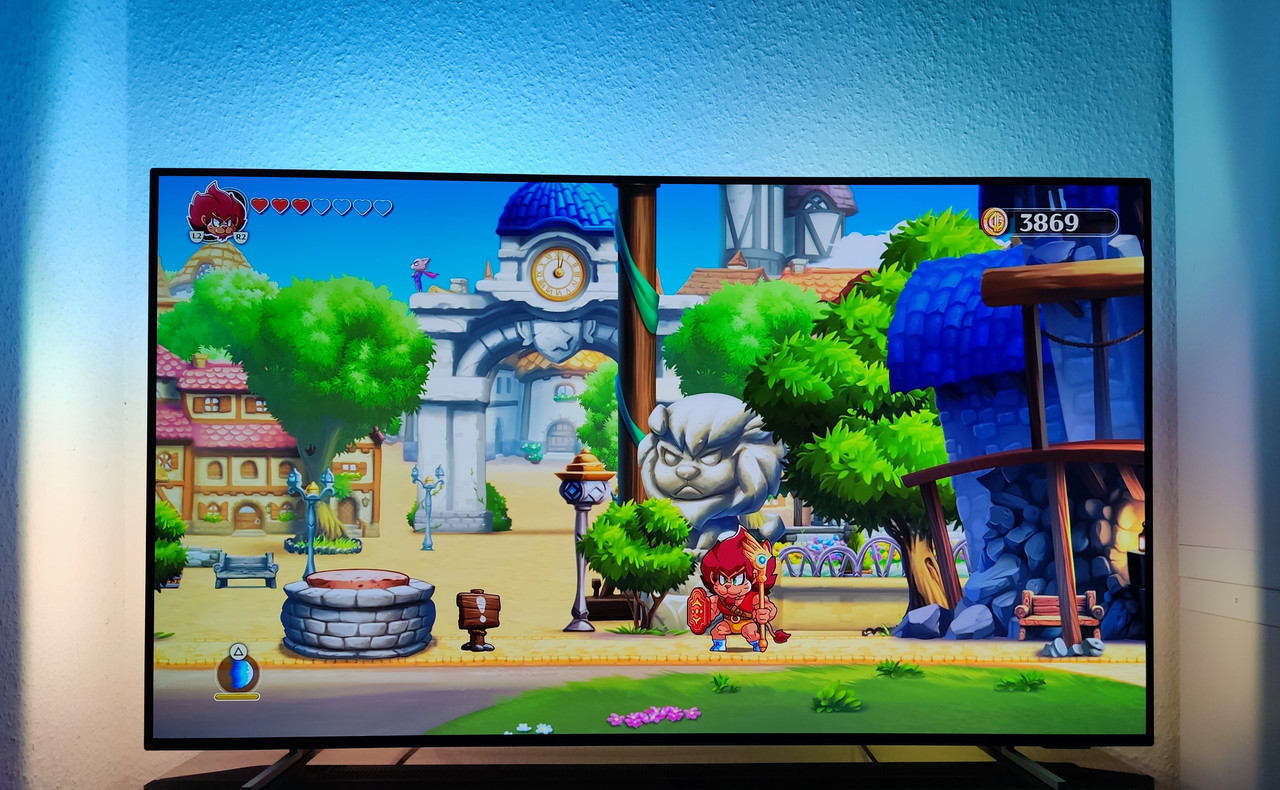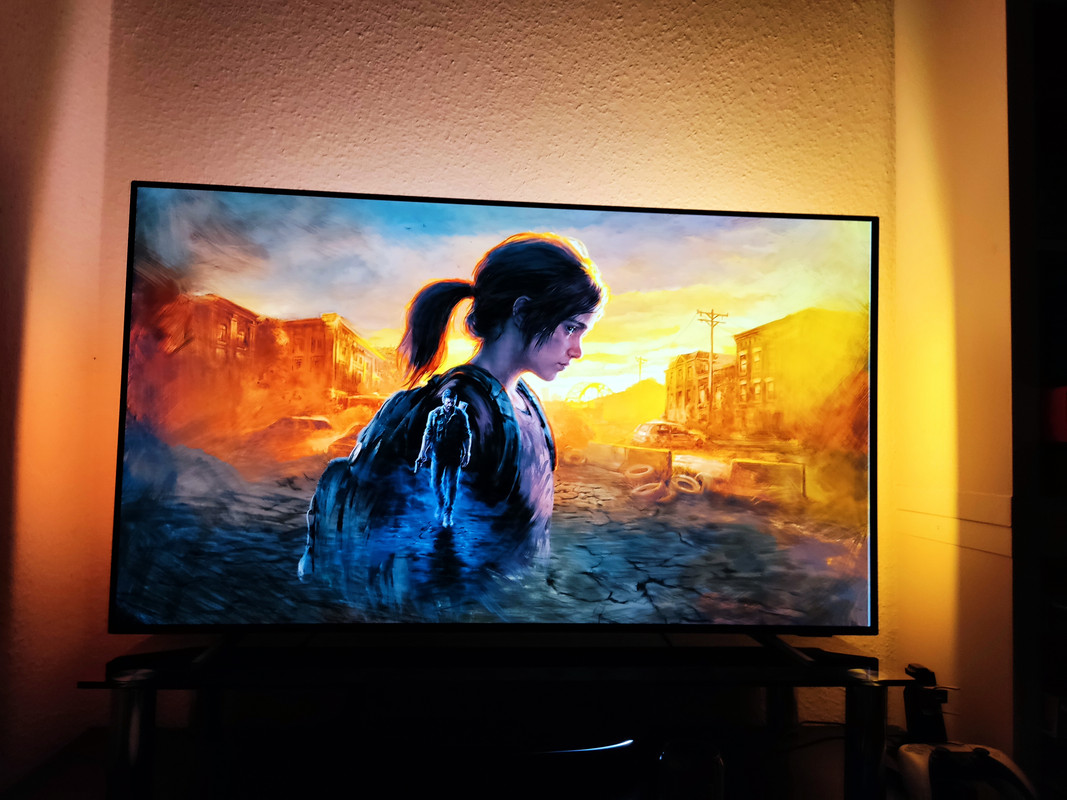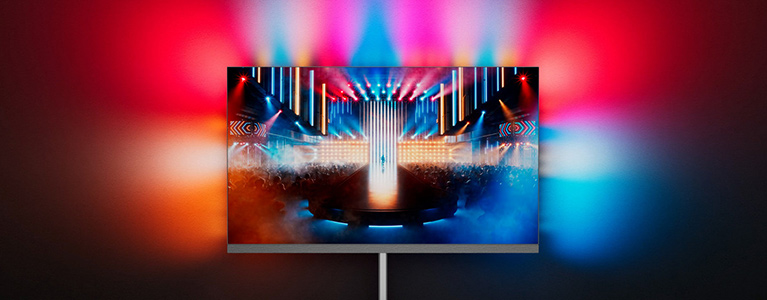Giallo Corsa
Member
I have had the Phillips Hue Sync Box for several years now, and it is awesome. How well it works though depends on the what you are watching and what settings you have it on:
For those who find it distracting, the key is to make the brightness match the TV's brightness or for it be slightly lower than the TV's. when you do this, the light is more of an extension of the light coming off of the TV. If the brightness is brighter than the TV, then everytime the light changes your eyes want to look at it. I do not have this issue when playing video games, so I leave it brighter when playing. This makes me notice the lights more for playing games. With watching movies and TV, I want the extra light to disappear more, so I set it to be at the brightness of the TV or under it. When set this way, I have found most people who thinks it would be distracting does not find it to be so and actually likes it.
- gaming - works great! It really adds a level of immersion to the game. I usually set the lights to max brightness and intensity to "Extreme". All games work well with this IMO. Explosions seem to go across your wall. Red flash notifications from from taking damage is more noticeable. Even subtle things like shadows from passing trees in racing games are cool due to the lights dimming for the shadows, making as if the lighting in the gaming world is impacting your world.
- concerts - during COVID some of my favorite bands were doing live concert streams, and the sync lights were great with them. Makes it feel like the light show from the concert is happening in your room. I would try to have the brightness match the level of my TV and set intensity to "Extreme".
- WWE events - similar to concerts, the intros and lighting of the matches work well with the sync lights. Makes you feel like you are there. During the matches however, it is not as immersive. I would set the lights to match the brightness of the TV and set the intensity to "High.
- SciFi/Animation/sFX movies - if a movie is full of special effects or is an animated film, it works really good as well. StarWars is great with the light of the lightsabers making the room glow and the red lasers form the spaceship battles make the room flash. Animated movies can glow as well. Lion King's intro is a good demo for people. Spider-Man into the Spider-Verse is also great. For these, I usually have the lights set to be either just below the brightness or matching the TV and set the intensity to "High"
- Normal TV watching/sports - for everyday TV watching, dramas, or watching live sports it can become distracting if the settings are not set up correctly. Especially if there are a lot of camera cuts, causing the lights to change real quick without any "action" for the lights to react to. Example, just cuts going back and forth between people talking. However, you can still make the sync lights work well in these situations, making them good bias lighting that matches the colors on the screen. For these, I make the lights brightness to be a little bit lower than the TV's and also the setting to be on "Moderate" or "Subtle".
As for HDMI 2.1, it is a bummer that it is not compatible. However, I have my setup in a way where I can optionally use it with games. This way sometimes I use the SyncBox with games and other times I am using HDMI 2.1 features with games. Not all games need VRR or do 120hz, so having the optional ways to hook it helps. Here is how I have it setup:
- PS5, XSX, switch, 4k UHD Player, and 4K Chromecast are hooked up to my Onkyo HDMI 2.1 AV Receiver
- HDMI Out A on the receiver is hooked up to my TV's eARC input that also supports HDMI 2.1
- HDMI Out B on the receiver is hooked up to the Sync Box, and the Sync Box is hooked up another HDMI port on the TV
- When wanting to use HDMI 2.1 features, I send the video through HDMI out A
- When wanting to use the sync box, I send video through HDMI out B
Nice write-up friend
Here's the thing though : People interested in Ambilight (or Hue) already know that it works well, the problem lies in the fact that...it can cost up to 500+ Eurodollars (depending on the number of lamps that you want to add) for the privilege of being able to use it, this is why people are interested in cheaper, 3rd party alternatives.
Native Ambilight on Philips TVs is amazeballs, Hue is a close 2nd and everything else (Govee, Lytmi etc) come - obviously - last either because the light response is bad, color representation is off and/or many new HDMI 2.1 features aren't supported...
Ambilight is supported properly on new, HDMI 2.1 Philips TVs so i can't understand why many new 3rd party options are stil 4K60 only - i don't think that Philips has patented such a thing so the only reason i can come up with is said companies skimping on hardware trying to sell their products at a 9somewhat) reasonable cost.
Anyway, Philips has released its 2.1 syncbox and while it supports VRR and 120Hz, it has problems with HDR (colour accuracy).
Lytmi Fantasy 3 PRO supports 4K120 BUT, not VRR.
Apparently - and i can't vouch for the brand - but FANCYLEDS has released a fully operational HDMI 2.1 syncbox , meaning, it does 4K120, supports ALLM and VRR and HDR properly, here's a video in action if anyone's interested - it's 214 Eurodollars for the 55'' version btw :
EDIT : the CATCH is that...it only has 1 HDMI in port LMFAO ! man, fook these cheap-ass companies !
Last edited:






